This site is part of various affiliate programs. Links may give us a small compensation for any purchases you make, at no additional cost to you. Please read the disclaimer policy for full details.
If you want to take high-quality car photos as an enthusiast or to sell your vehicle, we can help! To take superb shots of your ride, choosing the right lens is important. The lens dictates the quality, composition, and style of your automotive photos. With so many lenses to choose from, it is difficult knowing which is suitable!
Don’t worry – I am here to help with my experience and knowledge of lenses for popular manufacturers like Canon, Nikon, Sony, and Fujifilm. In this guide, I have picked out the best lens for car photography for several different camera manufacturers.
How to Pick the Best Lenses for Car Photography
Before we look at car photography lens comparisons, I have created a short buying guide and checklist so you can get the right lens. To take amazing photos of cars, you need to ask the following questions:
- What’s the best focal length for car photography?
- Does it have a wide maximum aperture?
- Is it for a full-frame or cropped-sensor camera?
- Does the lens provide consistent sharpness and minimum distortion?
Focal Length
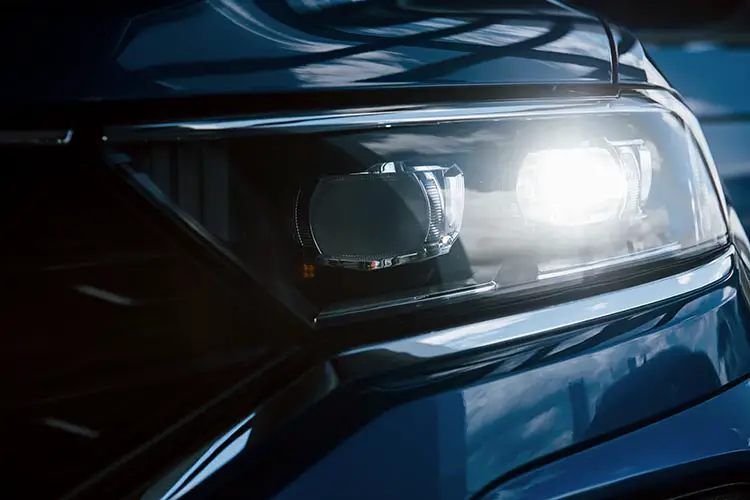
The focal length you use has a dramatic impact on the composition of your car photos. You must consider, therefore, what type of car photos you want to create.
Are you intending to shoot small details of the cars including interior shots? Maybe you want to take photos of the entire vehicle in different background settings?
For entire car photos, a lens with a wide focal length such as 24mm or 35mm is preferable. These lenses allow you to frame the car properly and include a decent amount of background too.
If you want a tighter cropped photo that puts the emphasis on the car, a narrower focal length such as 50mm could be preferable.
Lastly, for small details, or close-up shots of different parts of the car, a telephoto lens with a focal length of 75mm or greater is a better choice.
Maximum Aperture
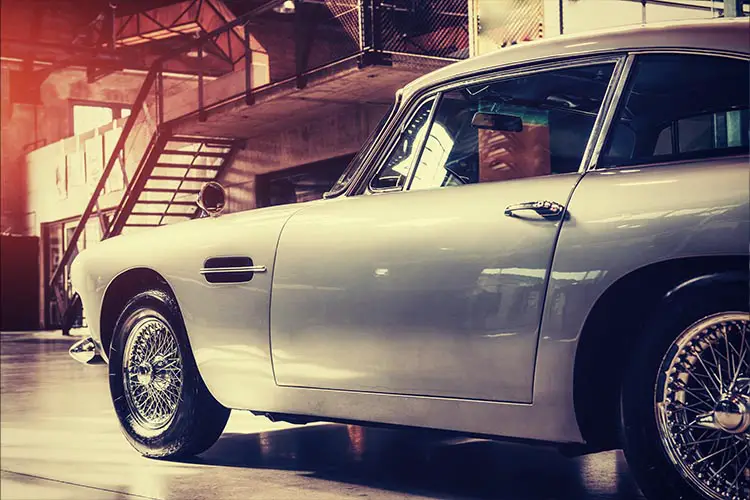
The aperture plays an important role in car photography.
Firstly, it affects the depth of field. A larger aperture like f/2.8 allows you to take photos with a smaller depth of field. As a result, you can easily focus on particular aspects of the car like the headlights or alloys while keeping the rest of the car out of focus.
Secondly, a larger aperture also gives greater control for low-light automotive photography and allows you to create bokeh in your background if desired. Ideally, you want a lens that has a maximum aperture of f/2.8 or larger – this will provide the best flexibility.
Full frame or APS-C
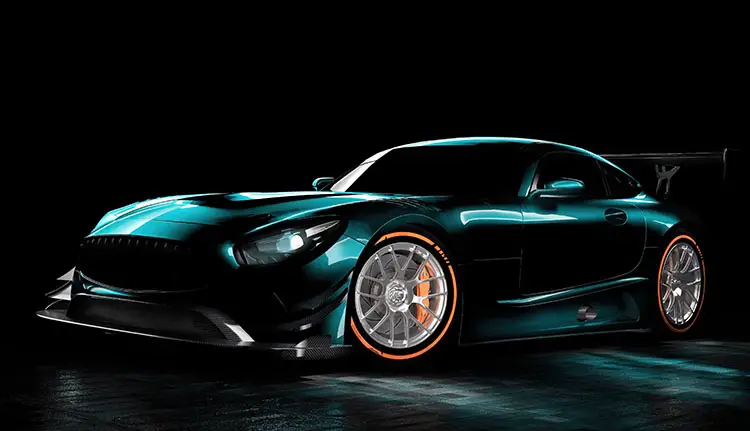
When looking at focal lengths, you must also consider the sensor of your camera. Camera sensors are either full-frame, APS-C, or micro four-thirds. In this article, we look exclusively at full-frame and APS-C.
The focal length for a full-frame lens is as described. For example, using a Canon EF 35mm f/1.4L II USM on a Canon full-frame DSLR gives a true focal length of 35mm.
In contrast, the focal length for an APS-C lens has a crop factor of 1.6x. Therefore, if you used that same 35mm lens on a camera with an APS-C sensor, the effective focal length would be 56mm (35 x 1.6).
As you can see, this can completely change the functionality of a lens and the type of photos it can produce. If you have an APS-C camera, you must allow for the crop factor when looking at focal lengths.
Image Quality
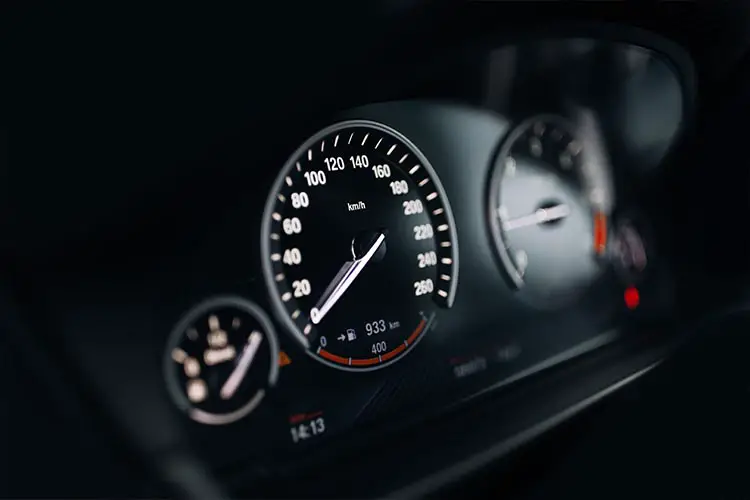
As with any lens, image quality is also important. Does the lens have any special optical coatings or elements that drastically improve sharpness? Does it have any special optics that reduce ghosting, flare, and chromatic aberration?
If it’s a zoom lens, does the sharpness and quality remain consistent across the entire focal length range? These are important questions to ask. Ideally, you want a lens that provides consistent sharpness, regardless of the conditions. It should also have minimum distortion that has to be corrected in post-processing.
The Best Lens for Automotive Photography – Full Reviews
Canon EF (Full Frame) Lenses
- Canon EF 35mm f/1.4L II USM
- Canon EF 24-70mm f/2.8L II USM
- Canon EF 70-200mm f/2.8L IS III USM
Canon EF lenses remain some of the best quality lenses available. These lenses are also versatile as they can be used on both full-frame and APS-C Canon cameras.
The best Canon lens for car photography is arguably the Canon EF 24-70mm f/2.8L II USM. This is a versatile zoom lens that covers a range of focal lengths. Using this lens, you can take close-up detail shots, wide-angle photos, or tighter crop shots. The constant f/2.8 maximum aperture is also incredibly useful for depth of field and creating professional bokeh backgrounds.
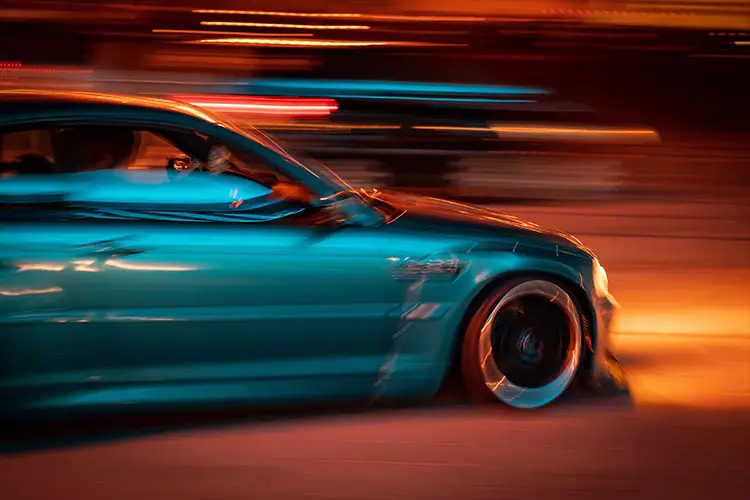
Aside from quality kit lenses, there are also specialist EF lenses like the Canon EF 35mm f/1.4L II USM, and Canon EF 70-200mm f/2.8L IS II USM.
Canon EF prime lenses like the 35mm are renowned for their superior sharpness and image quality. L-series prime lenses like these also typically have a wider aperture of f/1.8 or even f/1.4. This gives you greater control for night-time car photography, and to control the depth of field.
Alternatively, there are also some fantastic telephoto lenses for the Canon EF mount. The 70-200mm looks amazing and is incredibly durable. Like the 24-70mm, it also has a constant f/2.8 aperture across the focal lengths which greatly improves its utility for car photography. The focal length of 70-200mm allows you to experiment with different angles and crops for your photos.
For example, you could stand further back from the car and zoom in – this would allow you to create a tight crop of the vehicle. Alternatively, you could get closer and zoom in on specific details of the car.
- Pros:
- EF lenses typically have excellent sharpness
- L-series optics are fantastic and result in virtually no distortions
- Great range of prime and zoom lenses for different types of car photography
- Cons:
- The L-series lenses are usually heavier and bulkier
Canon RF (EOS R) Lenses
- Canon RF 35mm f/1.8 IS Macro STM
- Canon RF 24-70mm f/2.8L IS USM
Canon RF lenses are some of the most exciting lenses to be released by Canon in recent years. These lenses are built for Canon EOS R cameras like the incredibly powerful Canon EOS R5. Currently, the Canon EOS R cameras are all full-frame, but this could change.
RF L-series lenses like the Canon RF 24-70mm f/2.8L IS USM are incredibly versatile for car photography. With a variable zoom, excellent consistent aperture, and superior optics, you can create high-quality shots in a range of styles. This could be considered the best Canon lens for car photography if you want a “jack-of-all-trades” lens to create varied automotive photos.
Alternatively, there are some fantastic RF prime lenses like the Canon RF 35mm f/1.8 IS Macro STM that offer a larger maximum aperture.
- Pros:
- A good selection of both prime and zoom lenses
- Generally, the RF lenses have wider maximum apertures
- Consistent image quality and sharpness
- Cons:
- The L-series RF lenses can be expensive
Nikon FX (Full Frame) Lenses
- Nikon AF-S FX NIKKOR 35mm f/1.4G
- Nikon AF-S FX NIKKOR 24-70mm f/2.8E ED VR
- Nikon AF-S FX NIKKOR 70-200mm f/2.8G ED VR II
If you own a Nikon DSLR camera you have an excellent range of lenses for car photography at your disposal, with the best Nikon lens for car photography one of those shown above.
Nikon FX lenses are suited for full-frame cameras, but they can also be used interchangeably on DX (APS-C) cameras. This makes them some of the most versatile lenses available. The quality is also great, and Nikon has a huge range of both prime and zoom lenses.
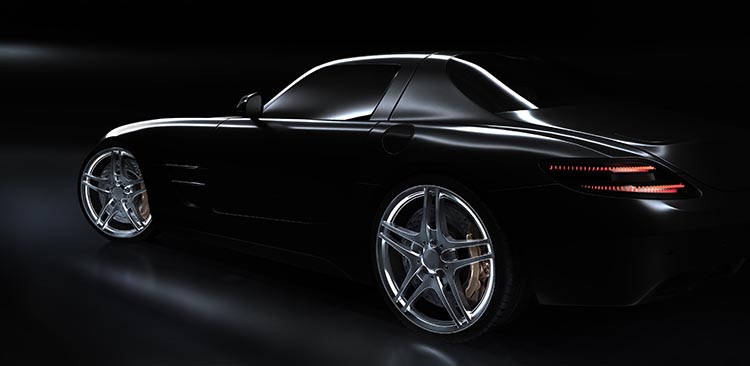
Nikon FX zoom lenses have some excellent features such as nanocrystal coatings and aspherical lens elements. These give the lenses superior optical performance and edge-to-edge sharpness. There are also both kit zoom lenses and specialist telephoto zoom lenses.
The 70-200mm f/2.8 is a superior telephoto lens that is great for detail shots and creating car photos with a shallow crop. The constant f/2.8 aperture is also superior to most telephoto zoom lenses as they typically have an f/4 maximum aperture. As a result, you can still get bokeh backgrounds and better performance for low-light photography.
If you want a general lens that can take various types of car photos, something like the 24-70mm f/2.8 is a good option. This benefits from the fast f/2.8 contrast aperture and also has vibration reduction technology. This means that it is easier to use handheld.
There is also a good choice of Nikon FX prime lenses like the 35mm f/1.4G. This lens has the aforementioned Nanocrystal coating and aspherical lens elements. As a result, it is incredibly sharp from edge to edge. The only downside you may find with Nikon FX lenses is that they are often not particularly lightweight or small which can affect their portability.
- Pros:
- Enhanced optical features for improved sharpness
- The FX lenses typically have a wide aperture of f/2.8
- There is a great choice of zoom lenses
- Cons:
- Can be heavier and bulkier
Nikon Z Lenses
- Nikon NIKKOR Z 35mm f/1.8 S
With few lenses currently available for the Nikon Z system, the 35mm f/1.8 above is currently the best Nikon Z lense for car photography. Nikon Z mirrorless cameras are available in both full-frame and APS-C formats. To accompany these fantastic cameras there is an ever-increasing series of Nikon NIKKOR Z lenses.
The Z lenses look fantastic, have consistent performance, and are much lighter and smaller than traditional Nikon FX or DX lenses. Prime lenses like the Nikon NIKKOR Z 35mm f/1.8 S offer superior sharpness and an excellent maximum aperture for car photography. The S-series lenses also have improved durability and weather sealing.
- Pros:
- Generally much smaller and lighter than traditional FX or DX lenses
- Typically have the excellent build quality and durability for outdoor use
- The S-series lenses usually have a larger maximum aperture
- Cons:
- The Z lens range is currently not as extensive as the FX and DX lenses
Fujifilm X (APS-C) Lenses
- Fujifilm XF16mm f/1.4 R WR
- Fujinon XF16-55mm f/2.8 R LM WR
- Fujifilm XF50-140mm f/2.8 R LM OIS WR
Above, you can see a selection of the best Fujifilm X lenses for car photography. Fujifilm X lenses are compatible with the Fujifilm X Series mirrorless and compact cameras. Examples of cameras include the X-H1, X-Pro3, and X-T4.
Fujifilm lenses have a unique design and look quite different from other manufacturers’ models. However, they certainly don’t lack in terms of performance or usability for automotive photography.
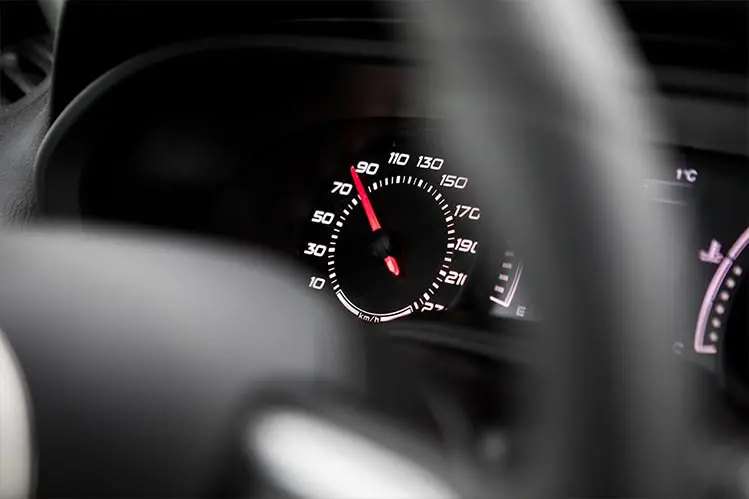
Prime lenses like the Fujifilm XF16mm f/1.4 R WR give excellent sharpness with minimum distortion. The f/1.4 maximum aperture is also a huge bonus and allows you to play with depth of field for your car photos.
Alternatively, there is also a range of zoom lenses such as the 16-55mm, and the 50-140mm. Fujifilm and Fujinon lenses generally feature Nano-GI coatings to reduce ghosting and flare. They also typically have rounded blade aperture diaphragms that allow you to create smooth, circular bokeh.
A downside to these lenses is that most of them are heavier, and the designs are often quite bulky.
- Pros:
- They feature superior optics and coatings to boost image quality
- Available in various prime and zoom options
- The WR lens models have extensive weather-resistant sealing
- Cons:
- Most of the lenses are bulky and heavy
Sony FE (Full Frame) Lenses
- Sony FE 35mm f/1.4 GM
- Sony FE 24-70mm f/2.8 GM
- Sony FE 70-200mm f/2.8 GM OSS II
Above, you can see the best Sony lens for car photography and several other excellent models. Sony FE lenses are right-up there in terms of quality and performance for car photography. These lenses are available for full-frame mirrorless cameras like the Sony A7R IV.
For the best quality, the G Master (GM) series lenses are the best options. These lenses have improved optics and weather-sealed exteriors for outdoor use. The Sony FE lenses are also mostly compact and lightweight which makes them ideal for car photography shoots where you have to travel to different locations.
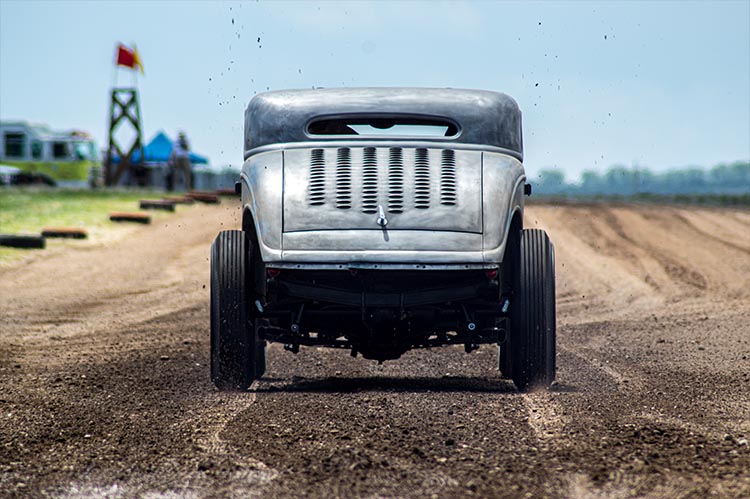
Most of the GM lenses also have an aperture ring and a customizable focus hold button. These are useful features as they allow you to react quickly to change your camera settings for different types of car photos.
Top choices include the Sony FE 35mm f/1.4 GM, Sony FE 24-70mm f/2.8 GM, and Sony FE 70-200mm f/2.8 GM OSS II. These three lenses cover the full range of focal lengths that you would need for car photography.
- Pros:
- GM lenses have a range of extra features like an aperture control ring
- Available in a wide range of prime and zoom configurations
- Most lenses have Nano AR coatings to reduce reflections, flare, and ghosting
- Cons:
- G Master lenses are generally quite expensive
Sony E (APS-C)
- Sigma 16mm f/1.4 DC DN Contemporary
- Tamron 17-70mm f/2.8 Di III-A VC RXD
If you have a Sony E APS-C camera, you can benefit from a range of third-party lenses from Tamron and Sigma for car photography. Both Tamron and Sigma are reputable lens manufacturers who produce models for various different systems.
Sigma has options like the Sigma 16mm f/1.4 DC DN Contemporary lens. This is a fantastic prime lens that is perfect for taking wide-angle photos of cars. If you want to take shots of the entire car, and include background detail, this is a good choice.
Tamron has a great multi-zoom lens in the Tamron 17-70mm f/2.8 Di III-A VC RXD. This lens covers everything from wide-angle full vehicle shots to telephoto shots at 70mm of tighter angles and small car details.
- Pros:
- Usually not as expensive as official manufacturer lenses
- Available for various different lens mounts and sensors
- Cons:
- Image quality may not be as consistent as official lenses
Third-Party Lenses
Although the lenses above are the absolute best that you can buy for their respective camera systems, if you wanted better value for money then there are some excellent third-party lenses, particularly from Tamron and Sigma, that fit most camera models and offer nearly the same high image quality, but at a much reduced price.
I would particularly recommend the Sigma Art 35mm f/1.4, available for Canon, Nikon and Sony systems (in full frame format, but compatible with crop sensors). The Sigma Art series is reknowned for its optical quality, matching or potentially even exceeding that of the Canon L-series professional glass. This is also the ideal lens for night photography, if you wanted to get some more use out of it.
The Tamrom 70-200mm f/2.8 is another excellent lens available for Canon and Nikon, covering the same telephoto range as the brand-specific model, but offered at a much lower price point. Although image quality might not quite match the best lenses from the other manufacturers, in practice you are not going to see any loss of quality.
Final Thoughts on the Best Lens for Car Photography
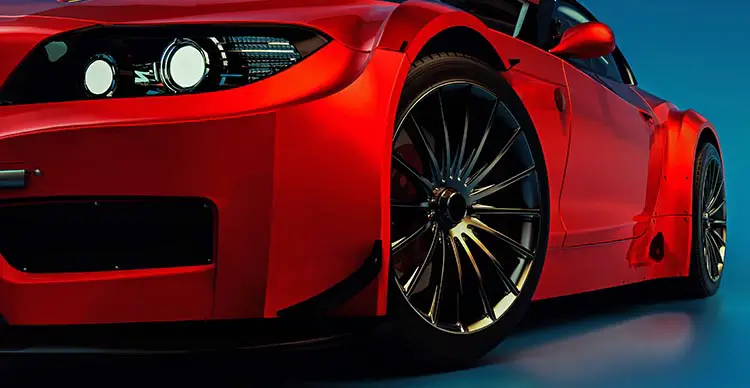
We hope you have found this guide on the best lens for car photography useful. As you can see, there are many different types of lenses you can use to achieve different results for your automotive photography.
If you want to take wide-angle shots that encompass the entire vehicle and background, a wide-angle prime lens with a focal length of 16-35mm is a great option.
Alternatively, if you want to take detailed shots of specific car parts such as the alloys, seat trim, or dashboard, a telephoto zoom lens with a focal length of 75mm or greater is a good option. Telephoto lenses are also great for taking tighter-cropped photos of the car exterior.
Lastly, to take a wide range of shots encompassing the above techniques, you could consider a multi-zoom lens that has a focal length of 24-70mm.
Read More:





















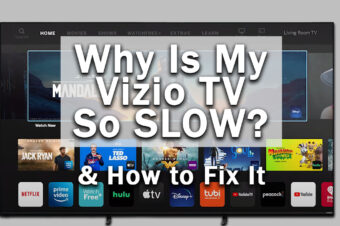

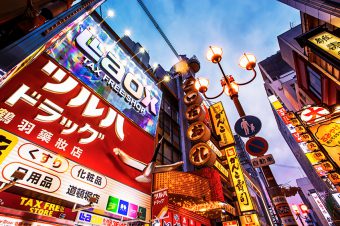
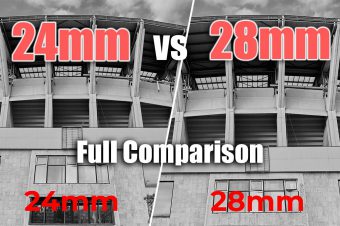
Leave a Reply